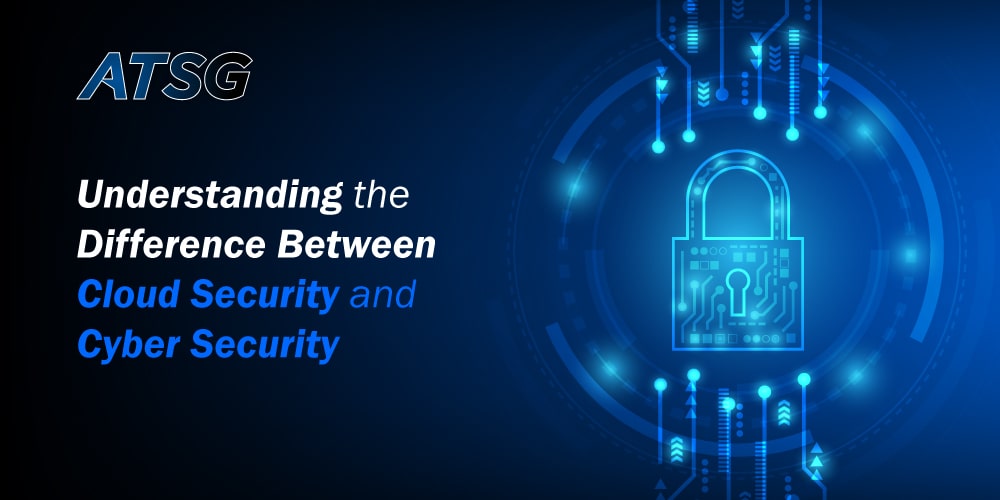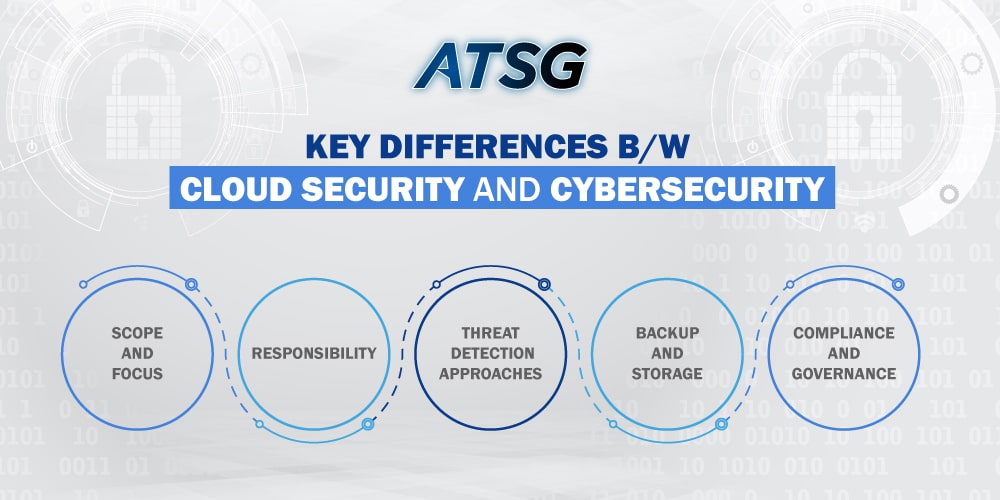When we think of cyber attacks, cybersecurity is the first concept that comes to mind. However, due to the growing preference for Cloud Computing solutions among companies, it is equally important to consider Cloud security as well. Cybersecurity analysts need to possess a deep understanding of the various nuances related to both Cybersecurity, and Cloud security. We say that because cyber threats have become omni-present, and this increases the importance of both cyber and cloud security to a whole new level. Plus, a resilient security posture is the “make or break” for the IT infrastructure of any enterprise.
In this blog, we aim to provide clear definitions of both Cloud security and cybersecurity, while also highlighting the key differences between the two. This distinction will give businesses clarity on how to implement comprehensive security measures, since most companies are now storing the majority of their data in digital form.

What is Cybersecurity?
Let’s start off by discussing cybersecurity, which isn’t just some fancy buzzword. It is rather a vital practice embraced by individuals and enterprises alike, to defend against the menace of cyber threats. With cybersecurity, businesses can shield their hardware, software and precious data from un-authorized access, that could very easily wreak havoc with our “digital existence”. Remember, we are talking about cyber attacks that can sabotage, erase, or even hold our systems and sensitive data hostage.
An average enterprise is usually bustling with multiple users, their devices, and vast amounts of data. Here, cybersecurity acts as a crucial shield to protect valuable data, and ensure its integrity across the digital landscape. It encompasses a range of defense mechanisms aimed at thwarting ransomware attacks, identity theft, phishing schemes, data breaches, and the incidental financial repercussions of such attacks.
Related: AI and ML: Unleashing New Potentials in Cloud Security\
What is Cloud Security?
Now, let’s move on towards Cloud security, and see why it became a vital discipline in the field of cybersecurity. Cloud security encompasses a comprehensive set of policies, advanced controls, essential technologies and IT services, that are designed to safeguard professional and personal data, as well as the applications stored within Cloud platforms.
Cybersecurity has indeed become a crucial topic of discussion, due to several reasons. For instance, the rate at which more and more enterprises are adopting Cloud solutions, has highlighted the need to address the unique security challenges associated with Cloud environments.
Remember, when it comes to establishing a strong Cloud security posture, enterprises need to shift away from traditional security models. Rather, they must embrace innovative approaches that provide comprehensive visibility, and effective threat identification for the provisioned Cloud assets.
Key Differences b/w Cloud Security and Cybersecurity
While both Cloud security and cybersecurity aim to protect data as well as systems, their scope, focus, approach and implementation methods set them apart. It is crucial for businesses to understand these key differences, especially when decisions about storing and protecting their data are concerned.

-
Scope and Focus
Cybersecurity is a broad term that encompasses the protection of information systems, networks, devices and data from various forms of cyber threats, regardless of their location or infrastructure. It includes securing on-premise systems, endpoints and networks. On the other hand, Cloud security specifically focuses on securing Cloud-based data, applications and infrastructure. It takes into account the unique characteristics and challenges of Cloud Computing environments.
-
Responsibility
In terms of responsibility, Cloud security follows a shared model. Cloud Service Providers (CSPs) are responsible for securing the underlying infrastructure, while client enterprises have the responsibility of implementing and enforcing security measures within their Cloud deployments.
In contrast, cybersecurity places bulk of the responsibility on the owners of enterprise devices, so as to protect their personal information, and also ensure the security of their own devices. -
Threat Detection Approaches
Threat detection approaches vary as well. Cloud security utilizes Artificial Intelligence (AI) to automatically detect and respond to threats in real-time. This proactive approach helps identify and mitigate potential security risks.
In contrast, traditional cybersecurity models rely on antivirus software, that require constant updates and patching to stay one step ahead of evolving cyber threats. -
Backup and Storage
Lastly, backup and storage processes also differ. Cloud security offers automated and vendor-managed backups as well as storage. This reduces the risk of physical harm to data.On the other hand, cybersecurity often involves manual data backups and storage, which may be more susceptible to human error, or un-intentional damage or loss.
-
Compliance and Governance
While compliance and governance are crucial for both Cloud security and cybersecurity, the former places a specific emphasis on addressing the compliance challenges associated with Cloud environments.
ATSG – A Trusted Cloud and Cybersecurity Provider
Enterprises looking for an “all-in-one” provider of cutting-edge Cloud and Desktop as a Service (DaaS) solutions, as well as comprehensive Cybersecurity services, ATSG stands out as a trusted partner. Our expertise enables us to effectively tackle a wide range of cyber threats, and protect your Cloud environment.
ATSG goes beyond traditional offerings, by providing comprehensive Cybersecurity Strategy Formulation. We understand the importance of conducting thorough Cloud security assessments, to develop a strategic plan that is tailored to the unique needs of your enterprise.
Furthermore, with our Managed Detection and Response (MDR) services, you gain round-the-clock monitoring, and rapid response to emerging threats. This keeps your enterprise ahead of the curve, especially with real-time threat intelligence.
ATSG also implements Layered Application Security, along with Zero Trust Architecture (ZTA), to give you the freedom to focus on driving your business forward, with the confidence that your Cloud environments and cybersecurity defenses are in “safe hands”.
Feel free to Contact ATSG, for highly secure and reliable managed IT services, Cloud Computing solutions, and intelligent technology solutions for your enterprise.




